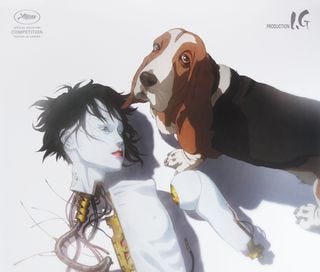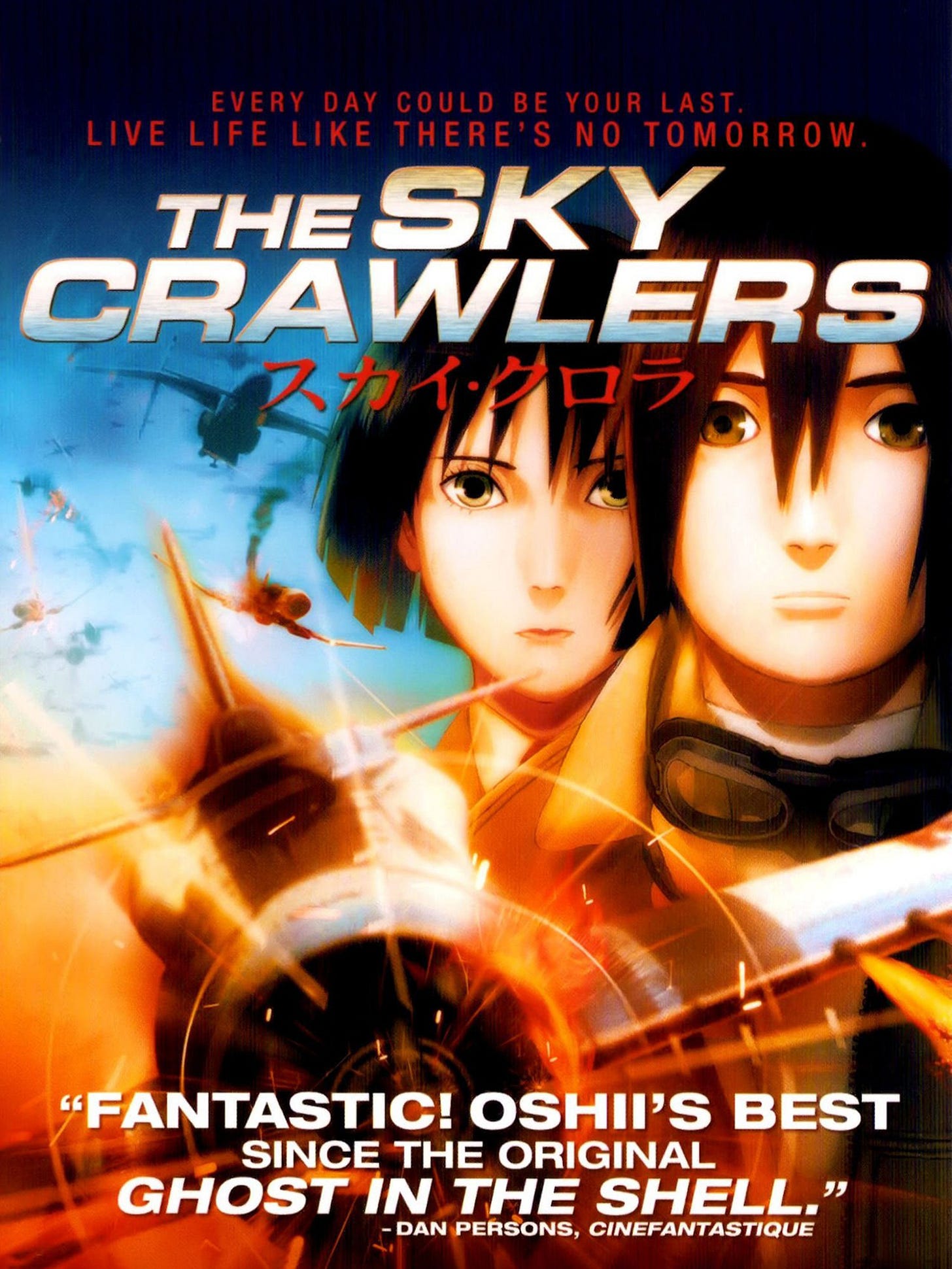They Spent How Much on Innocence?
Where I detail my love/hate relationship with this seminal work by OG anime sensei, Mamoru Oshii.
Innocence is the 2004 sequel to Ghost in the Shell (1995), one of the foundational pillars of what became the global anime fandom.
It’s in the news this week because Production IG has produced a beautiful 4K remastered edition of it to celebrate its 20th anniversary. At a screening earlier this month, the movie’s writer/director, Mamoru Oshii hinted to the audience that he’d like to make a third GITS movie.
Yesterday, during a talk at Niigata International Film Festival it reported that IG co-founder and producer Mitsuhisa Ishikawa “stated a sequel to Innocence could be made once the 2-billion-yen (about US$18 million in 2004) production costs of Innocence had been recouped.”
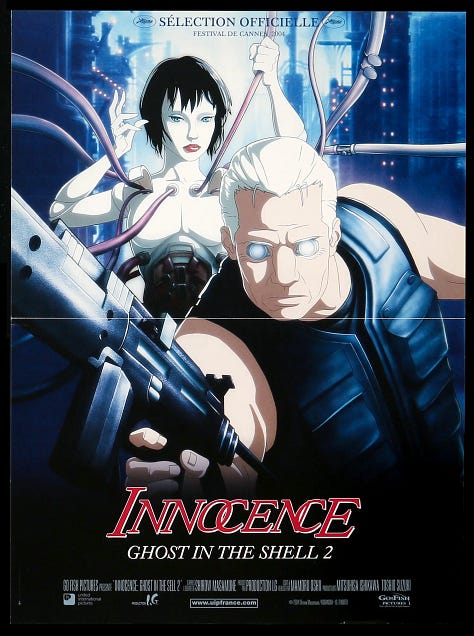
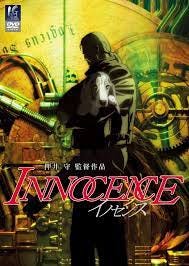
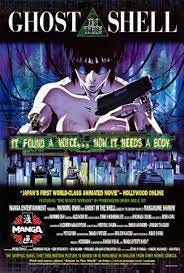
They spent how much on Innocence?
While working at Manga Entertainment, I acquired the UK/Ireland distribution rights to Innocence in 2005. We released it theatrically in October 2005. It garnered a lot of press, and a lot of confused critical “acclaim”.
One reviewer for The Guardian noted that “It feels more like an excuse for proverbs and musings than a genuine narrative, and, ironically for a movie about artificial lifeforms, the most believable character is the cop's pet dog. It is at least thought-provoking.”
In my opinion, the sequel possessed none of the charm of the iconic original, and it has been a bit of a journey for me to accept it on its own merits. Thankfully! Despite my misgivings, Manga had an amazing PR team at the time (Shout out to Almar, Richard, Farhana, and Lisa at The Associates, one of London’s greatest-ever publicity teams) and they were able to secure the attention of Jonathan Ross, a very popular comedian, broadcaster, and film critic who produced programming exclusively for the BBC at the time.
Thanks to Jonathan, Innocence, and Oshii-sensei received their own dedicated 30-minute-long episode as part of his Japanorama travel, art, and culture series for BBC3. To support the episode and the movie’s release he also contributed a feature-length op-ed for The Times weekend supplement.
Despite the fantastic press and media support and promotion, the movie’s UK box office result was disappointing, but the theatrical release did do enough to platform awareness for the film, which we temporarily re-branded to “Ghost In The Shell 2: Innocence”. This enabled Manga to get distribution for the home video release into the largest entertainment retailer in the country, Woolworths.
It was one of the most successful UK home video releases for an anime movie since Spirited Away. We sold 5,000 copies in the first week of release, and 15,000 copies in the first month. By 2010, Innocence had become one of our best-selling library titles ever, with more than 100,000 copies sold on DVD and Blu-ray in the UK and Ireland.
The cost of acquiring the UK rights to the movie was a lot in the early 2000s. We paid around $120,000 USD to the licensor (GoFish Pictures) and we invested another £150,000 on P&A (Prints and Advertising) for the 150-screen theatrical launch. It took Manga about three years to recoup its investment. In contrast, the 1996 home video release of Ghost In The Shell “became the first Japanese film to top the Billboard video sales chart with over 200,000 VHS copies sold. By 2002 the film’s home video releases sold more than 1.6M units worldwide, including over 100,000 units in Japan, and more than 1M units in the United States.”
If you’ve watched Innocence you’ll either believe it’s one of the seminal anime works of the early 2000s, and/or one of the most disappointing anime sequels of all time.
Oshii-sensei has a complicated relationship with anime and its fandom. He’s made numerous remarks in the past about anime losing its artistic appeal in its efforts to commercialize every story for otaku consumers. Oshii has previously said that he believes “the current anime is mostly otaku-centric and made to be turned into merchandising.”
I’m not even sure he likes his audience!
His 2008 film, The Sky Crawlers was another critical darling and commercial flop that some interpreted to be an epic anime diss-track at otaku culture in general. Well! That was my take. “The film explores themes of war, peace, and the meaning of adulthood, with a focus on the concept of "Killdre" who cannot become adults.” Killdre sounds a lot like arrested adolescents to me. Otherwise known as “otaku”. This movie was budgeted at much more modest $3M USD and it grossed $5.8M at the global box office. Most younger anime fans haven’t even heard of this movie. Never mind watched it.
Ghost in the Shell, which was produced for $10M USD features an adapted screenplay, written by Kazunori Itō, who is regarded as one of the greatest living anime screenwriters of all time thanks to his work on series and features including Dirty Pair, the Patlabor movies, the Gamera franchise, and of course the .hack/ franchise. Itō-sensei is known for his propulsive storytelling, and his ability to write well-executed action scenes while maintaining the beats and themes of the story. Ghost in the Shell benefits from this, whereas Innocence, which Oshii has sole screenwriting credit for is an entirely different beast. It is not an action story at all. I often describe it as a “philosophical tech noir”.
I am not sure if Oshii-sensei has ever really been in thrall to traditional three-act structure, or Americanized genre story-telling. I recommend you watch some of his earlier work including Angel’s Egg (1985, Studio Deen) and Patlabor (The original OVAs from 1988). These projects were formative for the team of writers, artists, and animators who worked on them. The creative nexus of Patlabor and the people who made it became part of the anime professional “Newtype” of the 1990s and early 2000s. If you take time to enjoy Oshii’s work on Angel’s Egg and Patlabor you’ll understand that he is an artist and storyteller that is preoccupied with philosophical storytelling. Some of the cuts in Innocence are so visually complex, and so packed with detail that they become a feast for the eyes and the soul. They do, however, lack gun fights, explosions, and Tachikoma.

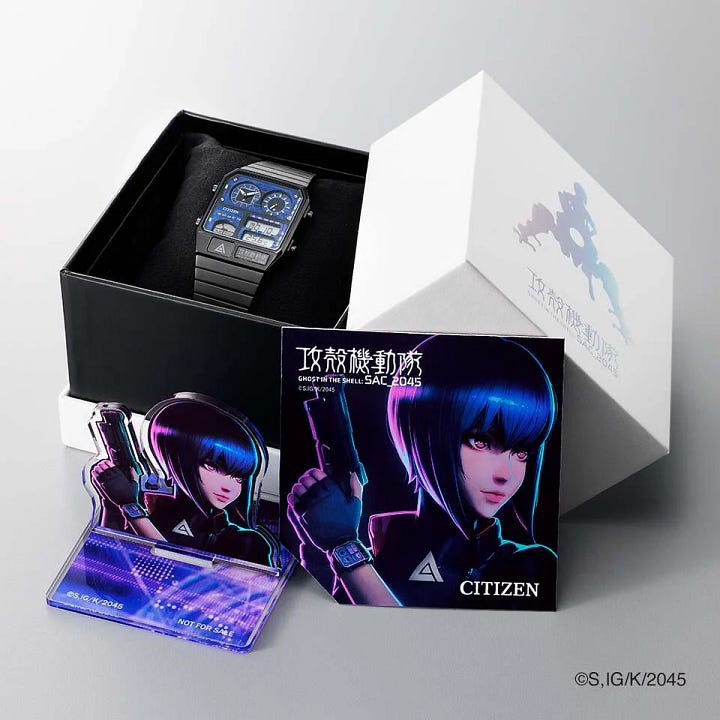
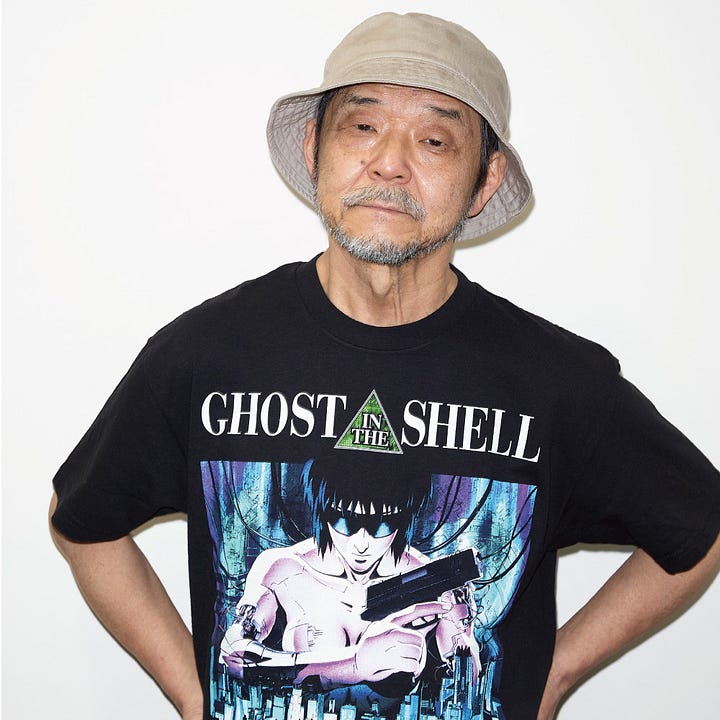
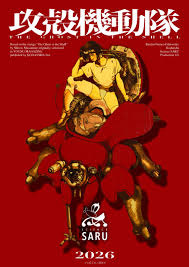
Don’t believe the hype
I don’t believe that Oshii is interested in the finer points of popcorn anime film-making or of becoming a paid-up member of the anime-industrial complex. If he is permitted to create a third Oshii-centric Ghost in the Shell movie, it will be esoteric, it will buck trends, and it most certainly will be worth talking about. It’s also likely to be the most successful project he’s contributed to since Innocence.
Innocence is an entirely different beast to GITS. It is meandering, poetic and meditative. Make no mistake, Innocence is a modern anime masterpiece, but it is uncompromising and not at all commercial.
One friend at a famous Japanese anime studio told me that, “If you want Oshii-sensei, you need to be prepared to pay.”
My advice to the producers at IG this time around is that they’d better keep a closer eye on the budget.
Recommendations
Like it or not. Ghost in the Shell is a “known IP”. It is a franchise and a brand, and it is still incredibly valuable. If haven’t dived into the world of Ghost in the Shell yet I have three recommendations for you. These are the things you must read and watch….
Ghost in the Shell by Shirow Masamune (Kodansha). Published in English by Dark Horse
Ghost in the Shell, the original animated motion picture (Manga Entertainment/Lionsgate/Kodansha)
Ghost in the Shell: Stand Alone Complex (2002-2005, 52 episodes, dir. Kenji Kamiyama, Production IG/Kodansha/Manga Entertainment/Bandai Vision)
In other news…
I’ve been writing the ANSWERMAN column for Anime News Network since October, and I am loving it. This week I wrote about why I didn’t and I still won’t be demanding the reinstatement of Rurouni Kenshin: Hokkaido Arc manga from its English-language publisher. You should go and check it out, and stick around for the reader comments, which I am particularly proud of. Doing my bit to enhance the social discourse amongst the fan community.
Until next time…

